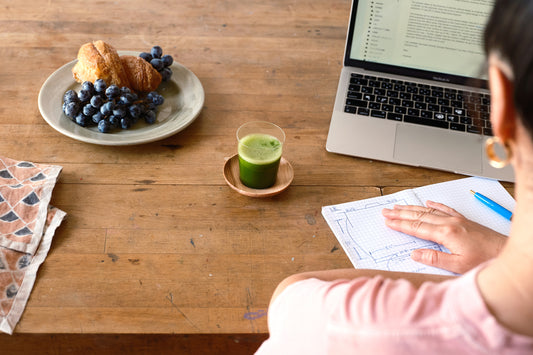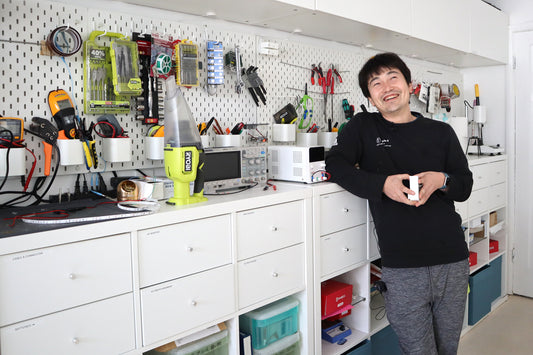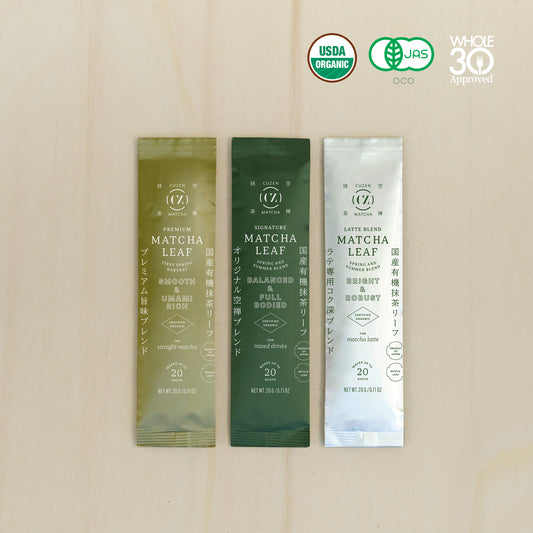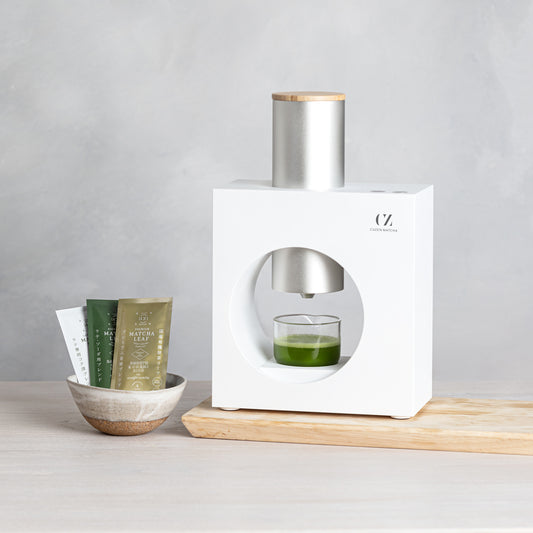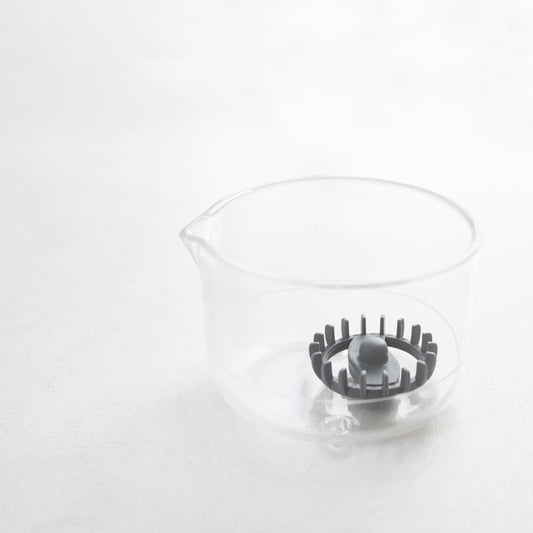
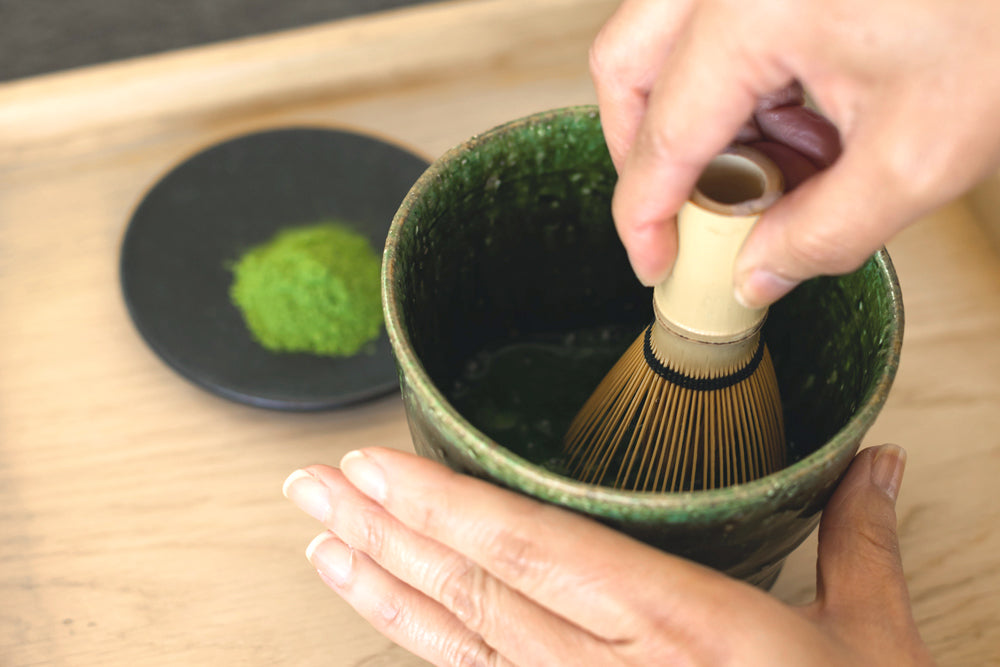
The hallmarks of quality matcha powder
Matcha has emerged as an energy-boosting superfood with a unique taste that has withstood the test of time. As with all food and beverage products, popularity means proliferation and not all matcha is good matcha. Here are some tips when searching for your perfect matcha powder.
Contents
- Perfect matcha powder begins with perfect tencha leaves.
- Just like coffee, blending matcha enhances qualities.
- Freshly ground matcha powder is best.
1. Perfect matcha powder begins with perfect tencha leaves.
Tencha ("ten" meaning "grind" and "cha" meaning "tea") is the tea leaf that is ground to make matcha. This type of green tea is shade grown for 20 to 30 days and dried with a series of precise steps. Good tencha is based on the cultivation technique, the harvest time, the farm location and the proper grinding equipment.
Look for shade grown
Perfect tencha leaves come from a legacy of shade-growing practices. With shade growing a favorable, mellow, umami-rich flavor is produced. This is because the conversion of L-theanine (an amino acid occurring naturally in green tea) into catechins (a bitter-tasting chemical and antioxidant) is limited, which gives the leaves a sweeter, more pleasant taste. Thus, the balance of L-theanine and catechins is perfected through shade growing. An increase in L-theanine is an increase of stabilized energy levels and focus throughout the day.
“Cuzen Matcha uses leaves that are shade-grown for three weeks – the perfect amount of time.”
Harvest timing
The harvesting technique defines the perfect matcha powder. The longer the leaves and buds stay on the plant, the more bitter they will become. Precise timing is essential. The best time to harvest is either spring or summer. If you want a smoother and sweeter flavor, look for leaves harvested in spring. If you want a more balanced and full-bodied flavor, spring and summer leaves are best.
“Cuzen Matcha uses a combination of leaves harvested in spring and summer.”
Farm location
Tencha leaves require some very special care. We searched high and low (but mainly high for altitude) to find a sustainable farm that sits at just the right altitude with optimal levels of sun and moisture in the air. We found a family-owned, organic tea farm in the Kirishima area of Kagoshima, Japan, operated by innovative farmers who exhibited the level of care we were looking for. We now work closely with these dedicated tea farmers who produce the leaves we use for Cuzen Matcha.
2. Just like coffee, blending matcha enhances qualities.
To blend tencha is to combine more than one green tea leaf, resulting in a unique flavor with distinctive characteristics. Blending leaves for matcha powder has similar benefits as blending beans for ground coffee. The blender takes advantage of the palette of flavors, combines those that complement one another, and produces a new and exceptional profile from a variety of leaves.
What’s the taste difference?
The taste that develops from blending will vary depending on the quantities and type of each leaf, and the tea master can adjust the flavor profile to suit a specific taste. We currently have three Cuzen blends. Our Signature Blend combines balanced and full-bodied flavors; our Premium Blend offers a smooth and umami-rich flavor; and our Latte Blend is bright and robust.
3. Freshly ground matcha powder is best.
The best entrees comprise whole ingredients. The most flavorful coffee comes from whole beans ground the day the coffee is brewed. Similarly, freshly-ground tea leaves, rather than pre-ground powder, result in the best cup of matcha.
How is freshly-ground matcha powder better than pre-ground?
The evidence is in the color. A pre-ground matcha will slowly fade to a tinted yellow-brown because of the oxidation process. Once leaves are ground, the powder oxidizes quickly, due to a greater surface area being exposed to oxygen. When the color fades, so does the flavor. The oxidation process even lessens the potency of the beneficial chemicals, L-theanine and catechins. The more time passes after grinding, the weaker matcha’s medicinal benefits become.
“Matcha lovers would not drink pre-ground matcha just as coffee lovers would not drink pre-ground coffee, and Cuzen Matcha offers the best freshly-ground matcha.”
How should I grind the leaves?
To elevate the quality of your matcha powder, you need the right tool. Not every grinding tool will deliver a smooth tea. Traditionally, matcha was ground on a large round stone into very small particles. While most kitchens don’t have space for large tencha-grinding stones, we have engineered a Matcha Maker with a small stone mechanism to grind the leaves into a fine powder immediately before they drop into the water for whisking. The small particle setting of a high-caliber grinder— like the one used in our Matcha Maker—will provide a smoother texture and a more palatable experience. Pour in the aromatic leaves, press a button, listen to the hum. In the time it takes to retrieve milk and a sweetener, you have freshly-ground matcha, full of antioxidants and flavor.
Everything you need to get started is in our Matcha Maker Starter Kit. We also offer a subscription that will keep you stocked with fresh leaves without tedious re-ordering. (You also save 15% with a subscription, which you can order on our Matcha Leaf page.) Now you can share your premium-quality matcha with your loved ones, in the comfort of your home.
Related products
-
Organic Matcha Leaf packets
Regular price From $17.00USDRegular priceUnit price / per$17.00USDSale price From $17.00USD -
Matcha Maker Starter Kit
Regular price $299.00USDRegular priceUnit price / per -
Organic Single Origin Matcha Leaf
Regular price From $45.00USDRegular priceUnit price / per -
Whisking Cup
Regular price $15.00USDRegular priceUnit price / per







